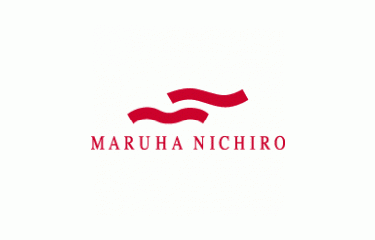In a series of press releases on 3 February, Tokyo, Japan-based Maruha Nichiro Corporation announced a new CEO, released its business results for the third fiscal quarter, and revised its outlook for the full fiscal year.
Shigeru Ito, who currently serves as president and CEO, will become the chairman of the board. His additional position as a representative director is unchanged. Masaru Ikemi, who is currently a director and senior managing executive officer, will take over as president and CEO, and will become a representative director. Junichi Yoneoka, who was a representative director and executive vice president, will become a corporate advisor. The changes take effect on 1 April, 2020.
Ikemi joined the company in 1981. From 2008 to 2011 he was general manager of the overseas department of Maruha Nichiro Foods, Inc., and then of Maruha Nichiro Holdings, Inc. He has since held various executive position: executive officer of Maruha Nichiro Holdings, Inc. (from 2011); executive officer of the company (from 2014); director of the company (2014); managing executive officer of the company (2017); director of the company (2017 to present); and senior managing executive officer (2019 to present).
In its summary of consolidated financial results for the third quarter of the fiscal year ending March 2020, the company reported a 2.3 percent decline in sales, compared with the same quarter of the previous year. Operating income dropped 20 percent, following an 8.8 percent decline in Q3 of FY2019. Ordinary income was off 20.6 percent and profits dropped 25.2 percent. The equity ratio of the company went down slightly, from 24.1 percent to 23.7 percent.
In consideration of its recent performance, the company revised downward the financial forecast it released in May 2019. Sales for the full fiscal year 2019 were JPY 922.5 billion (USD 8.4 billion, EUR 7.6 billion). The company had expected to exceed that with sales of JPY 940 billion (USD 8.56 billion, EUR 7.81 billion), but has lowered that forecast by 3.2 percent to JPY 910 billion (USD 8.29 billion, EUR 7.57 billion), for a year-on-year decline of a little over 1 percent. The operating income forecast was lowered by 31.4 percent, from JPY 25 billion (USD 227 billion, EUR 207 billion) to JPY 17.5 billion (USD 159 billion, EUR 145 billion) against last year’s JPY 21.8 billion (USD 198 billion, EUR 181 billion). The ordinary income forecast was also revised downward by 23.4 percent—from JPY 26.5 billion (USD 241 billion, EUR 220 billion) to JPY 19.5 billion (USD 177 billion, EUR 162 billion), compared with last year’s JPY 25.2 billion (USD 229 billion, EUR 209 billion).
Profit per-share is now expected to be JPY 247.03 (USD 2.25, EUR 2.05) per share instead of the previously forecast JPY 323.03 (USD 2.94, EUR 2.68) against JPY 317.24 (USD 2.89, EUR 2.63) in 2019. Maruha Nichiro’s shares on the Tokyo Stock Exchange (TYO: 1333) fell from JPY 2,648 (USD 24.16, EUR 22.03)on 3 February to JPY 2,480 (USD 22.62, EUR 20.63) on 4 February, a 6.3 percent drop, on the news, but has subsequently partially recovered.
Although the company’s Processed Foods Segment and Logistics Segment have been performing in line with its initial forecast, the company revised its consolidated financial forecast in accordance with lowered sales prices and a cost hike in its Fisheries and Aquaculture Segment and underperforming sales in its Marine Products Wholesaling Unit and North America Operations Unit.
Specifically, in the Fisheries and Aquaculture segment net sales increased due to an increase in the skipjack catch and farmed bluefin tuna harvest, but operating income fell due to a cost hike for farmed bluefin tuna and a dip in the skipjack price.
In the Overseas Business segment, net sales decreased due to lower exports of pelagic fish from Japan. Operating income, however, increased due to good fishing results in New Zealand and an expansion of production lines in its Thai pet food operation.
In its North America Operations, in spite of increased sales to Europe, both net sales and operating income of the unit decreased due to difficulty in procuring Alaskan salmon, a down market for Chilean coho salmon, reduced sales of snow crab from Eastern Canada, and a quota cut for Pacific cod.







